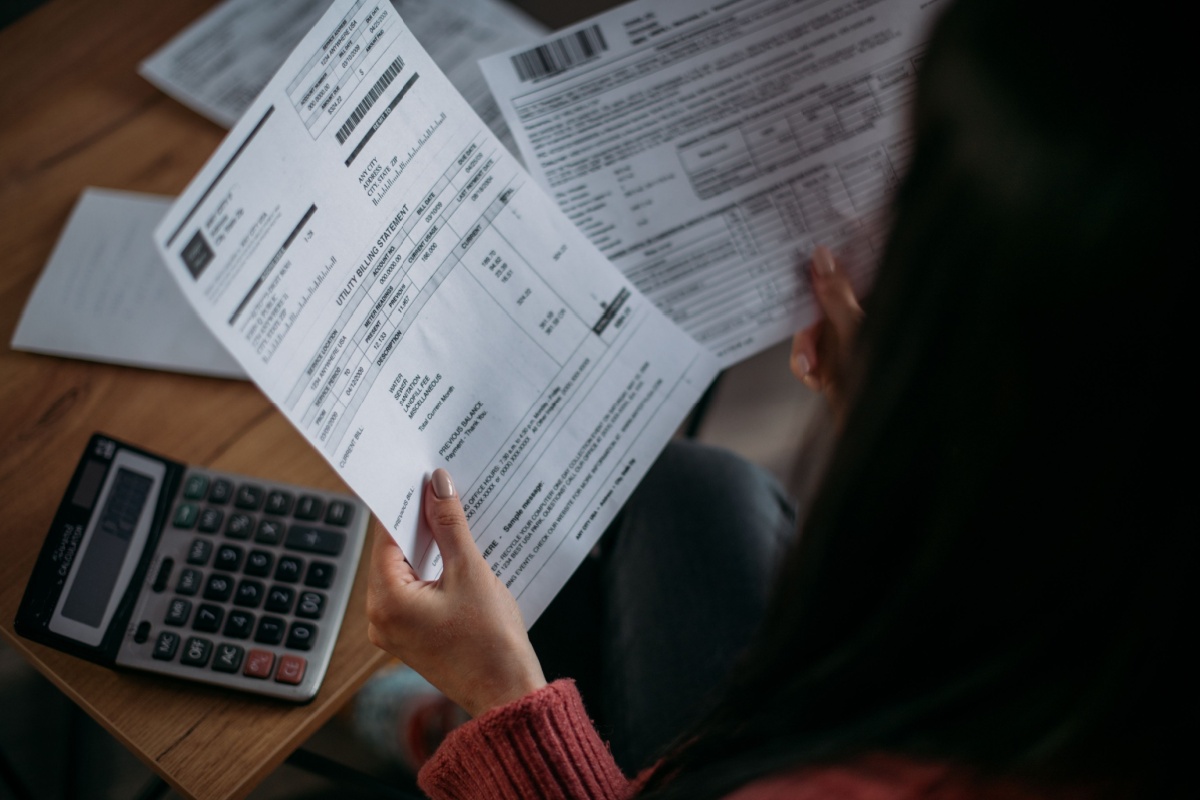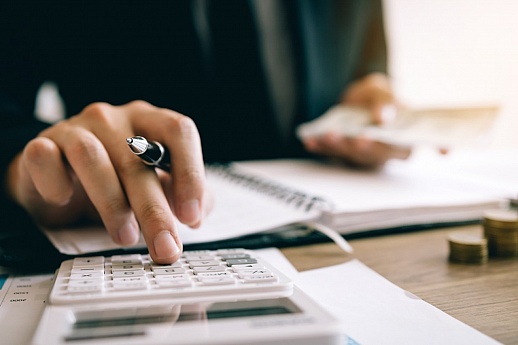How to Reduce Your Sewer Bill: 5 Simple & Effective Ways
Saving money is a universal goal, and finding ways to cut down on monthly expenses is always a win. High sewer bills are often overlooked, but cutting down on sewer bills can result in significant savings on your monthly housing costs.
From fixing leaks to upgrading to efficient appliances and adopting water-conserving habits, you can achieve substantial savings. Let’s explore how to reduce your sewer bill and put more money back in your pocket every month.
What Is a Sewer Bill?
Before we dive into how to save on your sewer bill, it’s important to first answer, “What does the sewer bill cover?” A sewer bill is a monthly or quarterly charge by your local utility or municipality for managing wastewater from your home. This includes water from sinks, toilets, showers, and appliances that are then treated at a sewage treatment plant.
 The sewer bill is calculated based on water consumption, assuming that the amount of water used correlates with the amount of wastewater produced. Some municipalities may have a fixed charge plus a variable rate based on usage.
The sewer bill is calculated based on water consumption, assuming that the amount of water used correlates with the amount of wastewater produced. Some municipalities may have a fixed charge plus a variable rate based on usage.
5 Tips to Lower Your Sewer and Water Bill
Sewer bills are part of your monthly periodic expenses, and they will fluctuate based on usage and season. The average monthly sewer bill in the U.S. is $63, but some areas may have higher costs.
Reducing your sewer bill effectively is sometimes easier than you think. Here’s how to lower your sewer bill:
Repair Leaks Throughout Your Home
Water leaks can silently inflate your sewer bill, turning minor drips into major expenses. As a result, identifying and fixing leaks can lead to significant savings in your sewer bill. Start by focusing on the most common culprits:
- Toilets: A running toilet can waste up to 200 gallons of water per day. Check for internal leaks by adding food coloring to the tank. If color appears in the bowl without flushing, you likely need to replace the flapper and adjust the float.
- Faucets: A single dripping faucet can waste over 3,000 gallons of water yearly. Tighten loose parts or replace worn-out washers to stop drips.
- Irrigation Systems: Misaligned or damaged sprinkler heads and leaks in the system can significantly increase water usage. Adjust the timers and settings based on the types of plants and turf, as well as the season, to help significantly reduce water usage and your bill.
For complex leaks, especially those within underground pipes, behind walls, or in the main water line of your home, consider hiring a professional. They can efficiently address issues beyond the scope of DIY fixes, ensuring your water system is optimized to prevent future waste.
Upgrade to High-Efficiency Appliances and Fixtures
Once leaks are addressed, you could consider investing in high-efficiency appliances and fixtures that use significantly less water. These include washing machines, dishwashers, toilets, and showerheads designed to minimize water consumption and save on sewer bills.
For example, high-efficiency washing machines use about 50% less water and energy per load than standard models, and modern dishwashers can save up to 3,870 gallons of water over their lifetime.
When shopping for these appliances, look for the Environmental Protection Agency’s (EPA) WaterSense label for toilets and showerheads and the ENERGY STAR label for washing machines and dishwashers.
While these updates do require an initial investment – high-efficiency washing machines and dishwashers can range from $500 to $1,500, and WaterSense toilets and showerheads from $100 to $400 – the savings over time are substantial.
On average, households can save hundreds of dollars annually on their utility bills. Over the lifespan of these appliances (typically 10 to 15 years), the savings can offset the initial costs and continue to benefit your budget and the environment.
Also, many rebate programs are available for homeowners who purchase high-efficiency appliances:
- Governmental Incentives: Some government programs provide tax credits or rebates for purchasing eco-friendly appliances. The WaterSense program, for instance, partners with different organizations to provide rebates for using their labeled products.
- Manufacturer Discounts: Appliance manufacturers sometimes offer discounts or special deals on these models, especially during promotional periods and new releases.
- Environmental Grants: Non-profit and environmental groups may offer incentives to support sustainable home improvements, including the installation of water-efficient appliances.
Adopt Water-Smart Landscaping
Water-smart landscaping involves designing and maintaining gardens and landscapes to minimize water use, typically by incorporating drought-resistant plants and efficient irrigation systems. Adopting these strategies can help reduce sewer bills by decreasing the amount of water that needs to be treated and processed, thereby lowering water consumption and associated costs.
 Here are some tips for optimizing your irrigation system to conserve more water:
Here are some tips for optimizing your irrigation system to conserve more water:
- Embrace Xeriscaping: Xeriscaping involves selecting drought-resistant plants and arranging them in efficient, water-saving ways. Pairing this with native plant gardening – choosing plants naturally adapted to your area’s climate – further reduces the need for irrigation.
- Install Drip Irrigation: These systems deliver water directly to the base of plants, reducing evaporation and runoff, and smart controllers adjust watering based on weather conditions.
- Incorporate Mulch: A generous layer of mulch around plants helps retain soil moisture, reducing the need for frequent watering. This simple action not only conserves water but can also lower your monthly bill.
- Adjust Sprinklers: Regularly check and adjust sprinkler heads to ensure water is not being wasted on non-target areas like sidewalks. Make sure the spray pattern covers only the intended vegetation.
- Zone Your Garden: Organize your garden into zones based on plant water needs. Grouping plants with similar watering requirements allows for more targeted irrigation, reducing water use and stress on plants.
Change Daily Water Use Habits
Aside from the big changes like purchasing energy-efficient appliances, you can also incorporate smaller, everyday water-conserving measures that can go a long way in saving you money. Here are practical tips and strategies to make water conservation a collective effort within the household:
- Full Loads Only: Operate dishwashers and washing machines with full loads. This practice maximizes efficiency, saving approximately 1,000 gallons of water monthly.
- Flush Efficiently: Upgrade to a dual-flush toilet or install a toilet tank displacement device to reduce the volume of water used per flush. This can save thousands of gallons per year, directly impacting your water and swerve usage.
- Turn Off Taps: Turning off the tap while brushing teeth or shaving can save about eight gallons of water per day, which amounts to nearly 3,000 gallons annually.
- Reuse Water: Collecting rainwater for gardening or reusing greywater for outdoor irrigation can save an average household up to 40,000 gallons of water annually.
- Encourage all household members to participate in water-saving efforts by leading by example. Implement a reward system for those who adhere to these practices to further enhance engagement, making conservation a collective achievement with significant impacts on water usage and costs.
Monitor and Manage Water Usage
Finally, keep a close eye on water usage through modern technology and regular maintenance. Smart home devices like smart water meters, leak detectors, and home automation systems help you track usage patterns, helping to identify opportunities for saving. These devices can alert you to unusual spikes in water use, often indicating leaks or inefficiencies that would otherwise go unnoticed.
Smart water meters allow for detailed tracking of water consumption, enabling homeowners to spot trends and adjust habits or fixtures to conserve water. Leak detectors offer immediate alerts to potential problems, often before they escalate into costly repairs. And smart irrigation controllers tailor watering schedules to the specific needs of your landscape, considering weather conditions and soil moisture levels.
Conclusion
From fixing leaks to upgrading appliances and adjusting daily habits, each step brings you closer to a more sustainable lifestyle and a lighter sewer bill. Remember, every drop of water saved not only benefits your wallet but also contributes to a healthier planet. So, take these simple steps and watch your sewer bill shrink before your eyes.
FAQ
Check out this FAQ section for more clarity:
What Is a Normal Sewer Bill?
A normal sewer bill varies by location but can average around $63 per month in the U.S. This figure can be higher in some areas due to the cost of living, the level of investment in wastewater treatment infrastructure, and environmental regulations that require more sophisticated processing methods.
Is Sewage Included in the Water Bill?
Whether sewage is included in your water bill can vary, potentially leading to unexpected expenses. Typically, many municipalities combine the cost of water usage and sewage services into one bill. This means your payment covers both the freshwater supplied to your home and the treatment of wastewater or sewage. However, some regions may bill these services separately. To avoid surprises, it's wise to check with your local utility provider about how they handle billing for these services.
Why Is My Sewer Bill So High?
A high sewer bill can result from leaks, inefficient water use, outdated appliances, or an increase in the local sewer rate. Seasonal changes in water use can also affect your bill.
How to Lower the Sewer Bill in an Apartment?
Lower the sewer bill in an apartment by reducing water usage through shorter showers, using appliances efficiently, promptly fixing leaks, and installing low-flow fixtures where possible.
Why Would My Sewer Bill Double?
Your sewer bill may double due to a significant increase in water usage, undetected leaks, changes in municipal billing rates, or inaccuracies in meter readings. Call your utility company immediately if you notice any sudden spikes to identify the cause.





